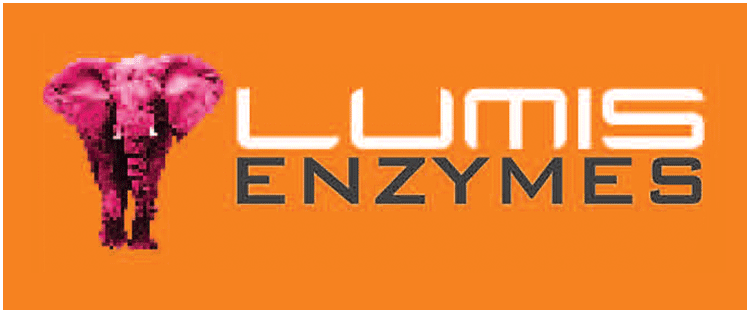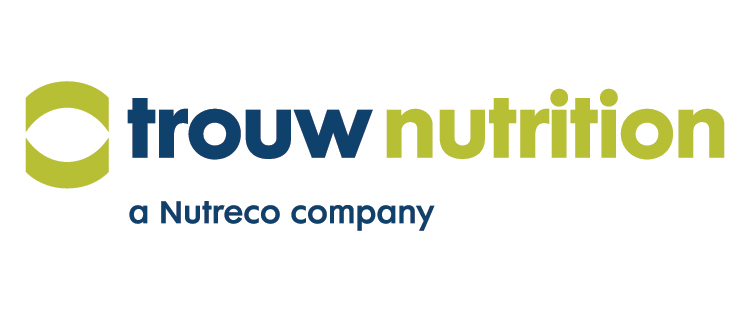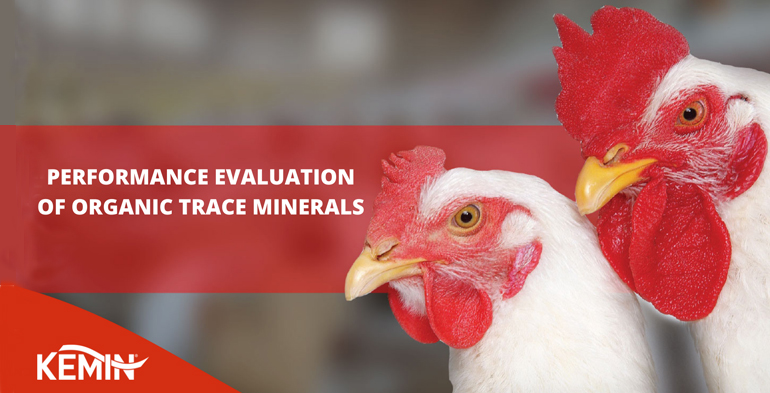
Dr. Arun C Mazumder, Dr. Venket M Shelke, Dr. Partha P Das, and Dr. Rahul Mittal
Kemin Industries South Asia Pvt. Ltd.
INTRODUCTION
Optimum nutrition supply is an essential requirement for the expression of desired genetic potential of the broilers. Along with macro-nutrients, trace minerals play a vital role in better production performance, feed conversion ratio, and profitability. Trace minerals act as a catalyst of enzyme systems involved in different physiological process, including digestion, metabolism, biosynthesis, and immune defense mechanism. Generally, minerals are supplemented in the form of inorganic salts such as carbonates, oxides, and sulphates through feed to meet the breed requirements. Bioavailability of trace minerals from the feed materials of plant origin and inorganic source is less while the requirement of modern high producing broilers is high. Dissociation at low pH in the upper gastrointestinal tract makes them more susceptible to interact with other nutrients and formation of unabsorbable complex. In commercial practices, supply of inorganic trace minerals is 2-3 times more than the amount recommended by National Research Council (NRC) for poultry diets to avoid the deficiencies. Excessive levels of minerals in the diet such as zinc (Zn), copper (Cu), iron (Fe), and manganese (Mn) can cause mineral-mineral interactions and mineral deficiency (Table-1). Thus, the concept of increased dosage of inorganic minerals is unable to meet the feed standard with consistency. Mineral deficiency is responsible for less feed intake, undernourished chicken, lower growth, and disease susceptibility. Thus, improving mineral bioavailability by using organic sources came into focus to avoid the side effects of using inorganic trace minerals without compromising birds’ requirements. 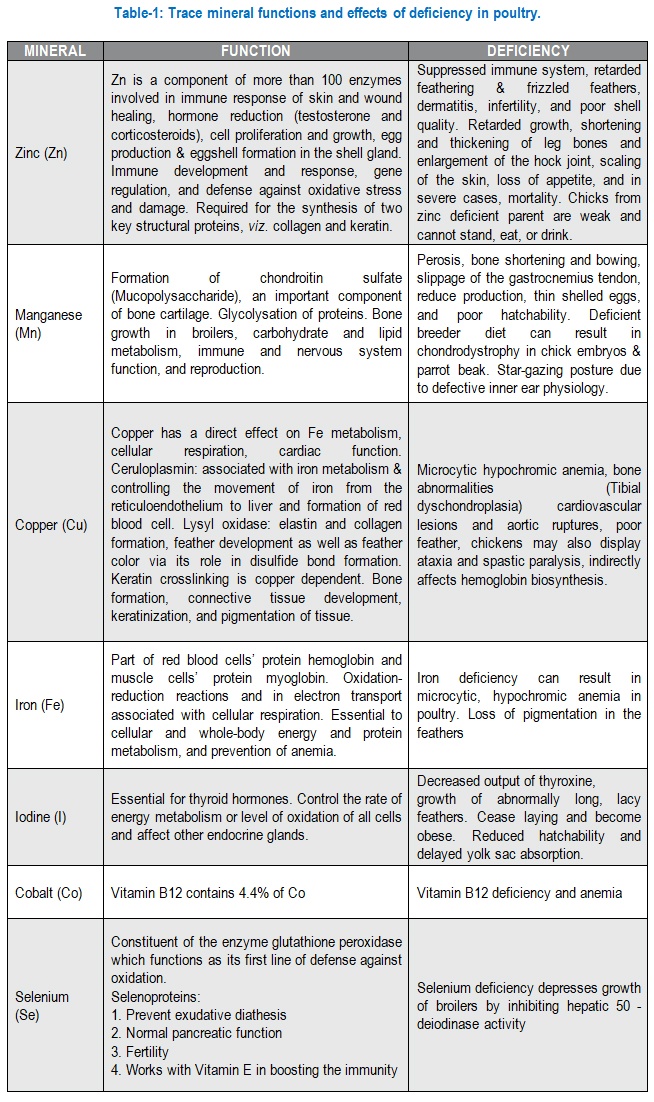
Organic trace minerals consist of metal ions bound to organic substances like a claw. Organic substances used for chelation of the metal ions are propionate, amino acids, peptides, and proteins. These ions provide high bioavailability, stability, and solubility. Besides, this chelation makes the ions biochemically protected against unfavorable reactions with other dietary components, including minerals. Better absorption through the intestine and higher bioavailability represents lower inclusion level in the diet and gain the trust of feed producers. Metal Propionate is one step forward for better dissolution, dissociation at the right pH, and highest bioavailability (Figure-1). Kemin developed an organic trace mineral premix, Kemtrace® Supreme, which includes manganese (Mn), zinc (Zn), copper (Cu), cobalt (Co), iron (Fe), iodine (I), selenium (Se), and chromium (Cr). It targets to fulfill the requirement of high yielding birds.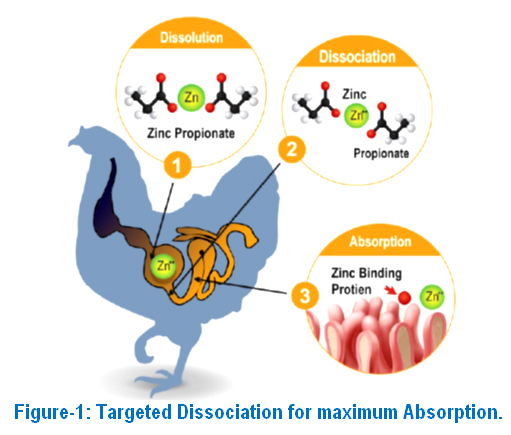
INDUSTRY SHIFT FROM INORGANIC TOWARDS ORGANIC TRACE MINERALS
Inorganic trace minerals have been used widely due to the least cost solution to meet the birds’ requirement, considering its poor bioavailability with higher dosage. But inorganic trace mineral causes high reaction not only with other minerals, but also with different nutrients (vitamins, enzymes, fatty acids, and pigments) in premixes and importantly in feed matrix. A study explores that in vitamin-inorganic mineral premix, vitamin K destroyed within six months followed by vitamin A, B1, biotin and vitamin E lost at 20%. Hence, industry starts practicing separating vitamins and minerals until final feed mixing, to avoid such interactions. But, what about the interactions at feed matrix? Exogenous enzymes are protein molecules that are sensitive to oxidation. It was found that trace minerals when mixed with enzyme like phytase deactivate significantly and rapidly. A study demonstrated the detrimental effect of inorganic trace minerals on vitamins and enzymes, which reduced the overall nutritive value of compound feed and its shelf-life. To avoid this interaction with other nutrients, chelation technology came forward and the benefits depends on the ligand and site of dissociation in the gut. Propionate technology patented by Kemin and approved by FDA & AAFCO had appropriate bond strength and dissociated at pH 4.8 at anterior part of duodenum and the best absorption started at duodenum. 
OBJECTIVES
• Demonstrate the benefit of using Kemtrace® Supreme in broiler feed for better performance
• To demonstrate that Kemtrace® Supreme provides a better return on investment (RoI) than the competitor product containing Proteinate trace minerals from the market
TRIAL DESIGN
A commercial broiler study was conducted at a customer place in Bangladesh for 35 days. A total capacity of 1,992 straight run Hubbard classic broiler birds were randomly divided into two equal groups. Corn-soya based pellet diet was formulated as per the standard Hubbard classic nutrient recommendation. All the raw materials and additives are same in both the diets other than the trace mineral supplementation. Table-3 represents the details of trial design. Performance parameters such as body weight (BW) and feed conversion ratio (FCR) were measured weekly, and European Efficiency Factor (EEF), cost of production (COP) per kg live weight of broiler and return on investment (RoI) was calculated at the end of study.  RESULTS
RESULTS
At the end of 35 days, livability of Proteinate trace minerals and Kemtrace® Supreme group was 97.39 and 98.09, respectively, showing 0.7% improved livability over Proteinate trace minerals. Average feed intake was 2,907g and 2,994g in Proteinate trace minerals and Kemtrace® Supreme, respectively, showing improved feed intake in Kemtrace® Supreme group. Kemtrace® Supreme had 61g increased body weight with 1-point better FCR than Proteinate trace minerals group. Kemtrace® Supreme group showed 14-points higher EEF over Proteinate trace minerals. 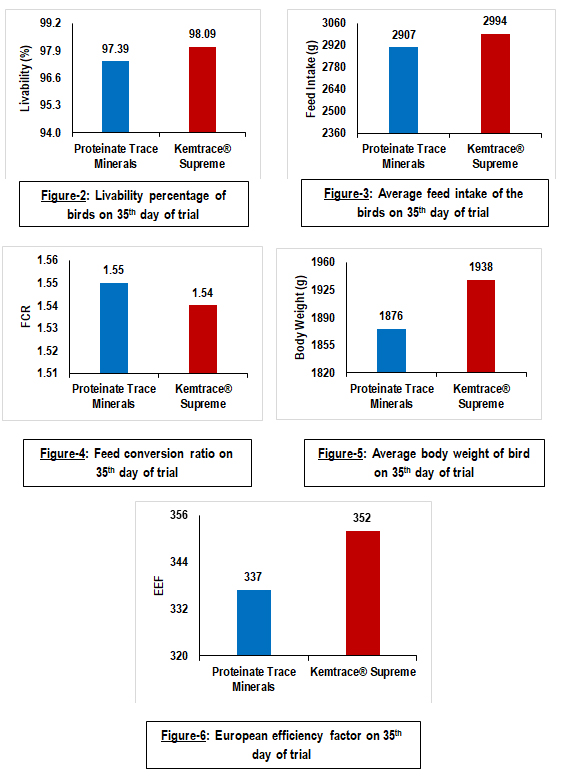
ECONOMIC BENEFITS
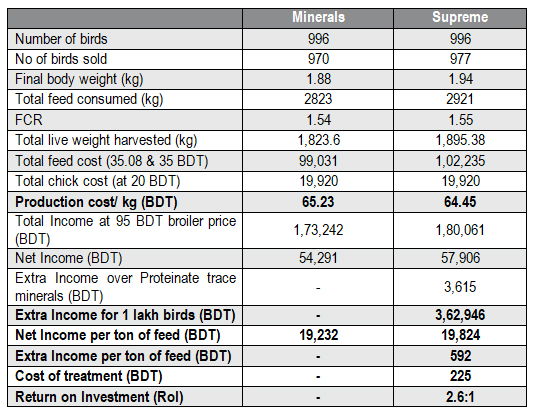 CONCLUSION
CONCLUSION
Supplementation of Kemtrace® Supreme showed improved livability, better feed intake, higher body weight gain with better EEF when compared to Proteinate trace minerals group. Kemtrace® Supreme group provided 592 BDT extra income per ton of feed with a 2.6:1 return on investment over the Proteinate trace minerals group. The present study states that propionate chelation is better than proteinate in supplementing organic trace minerals for improving broiler productivity and profitability.






